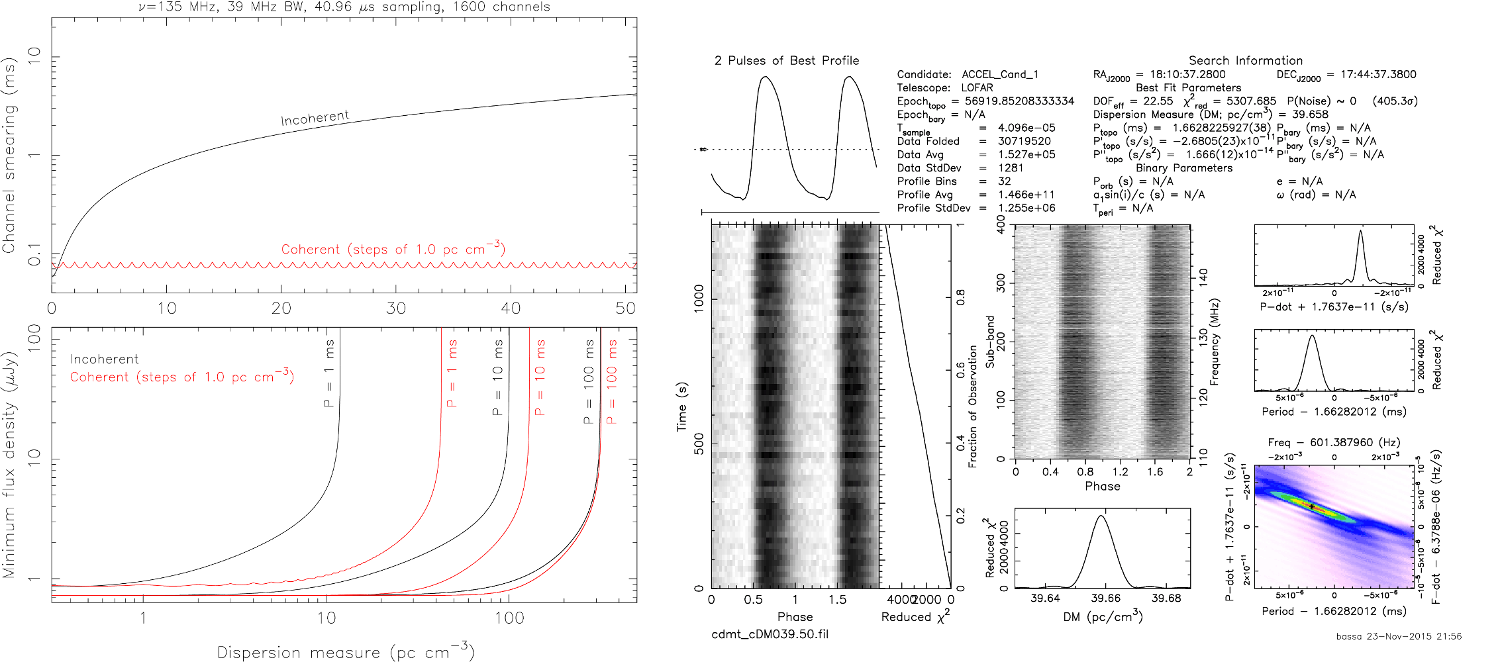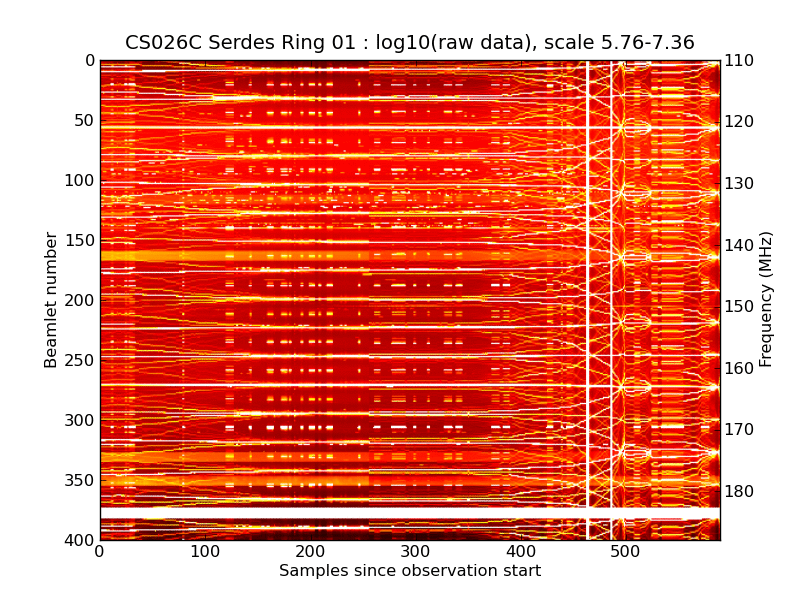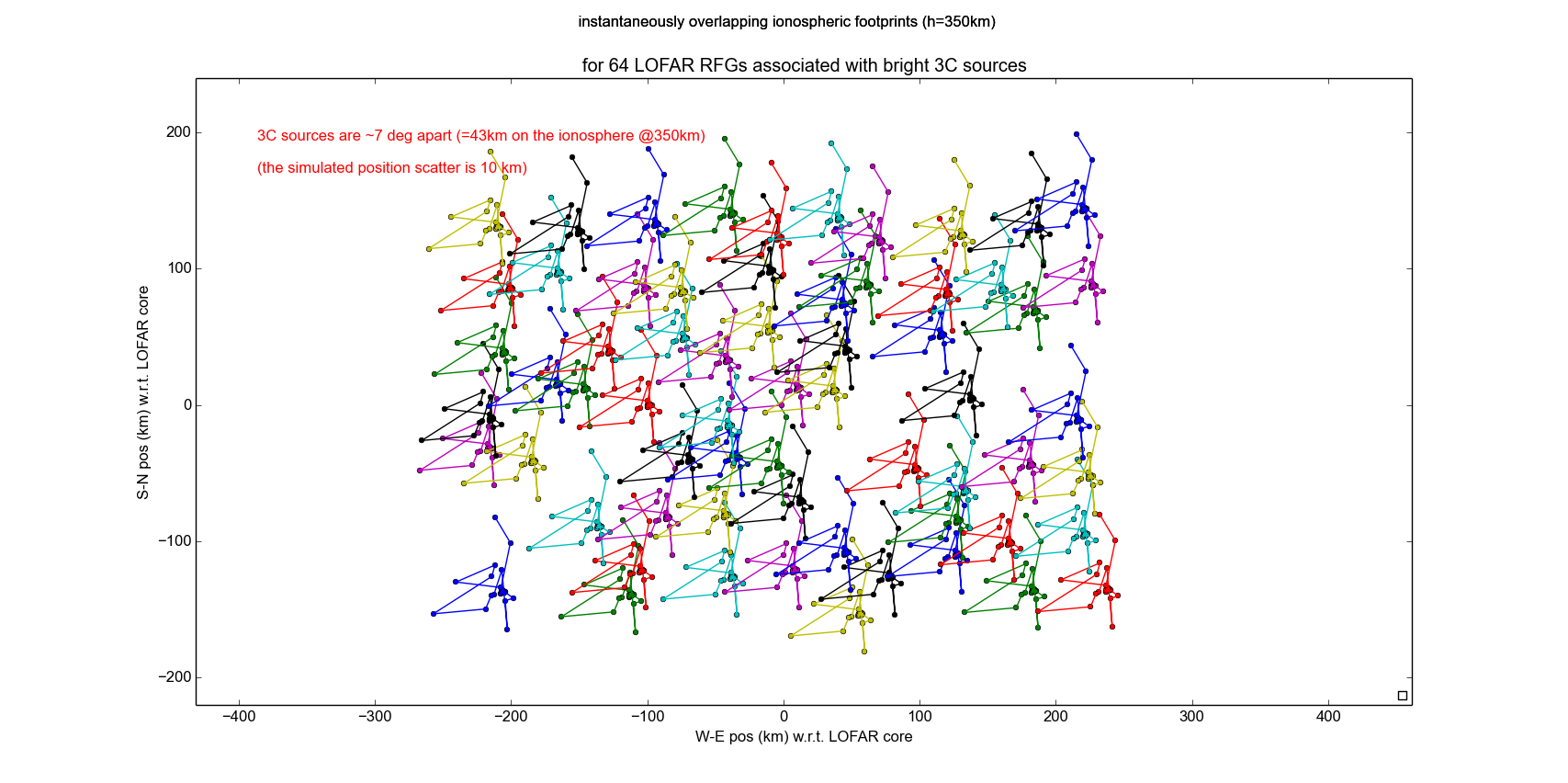![]() © Madroon Community Consultants (MCC)
© Madroon Community Consultants (MCC)
The LOFAR calibration process generates "Rigid Floating Groups" (RFGs) of N instrumental phase errors, one for each LOFAR station, looking in the same direction, at the same time. Since an interferometer like LOFAR only measures phase-
differences, it cannot determine absolute phases. But the N phases are highly accurate
relative to each other, as demonstrated by the LOFAR image quality. The RFG has amply proved itself as a powerful constraint in calibration and modelling.
The RFG represents valuable (and unique) information for the Global Navigation Satellite Systems (GNSS). Signals from GNSS satellites are affected by the ionosphere, an undulating layer of charged particles at an altitude of 100-500km. Since the ionosphere also dominates the LOFAR instrumental effects, the RFG phases may be converted to the relative Total Electron Content (TEC) along N different lines-of-sight through the layer(s). Since any contamination by other instrumental effects will vary much more slowly, the TEC variations in position and time will be highly accurate.
For the past year, ASTRON and the Dutch Aerospace Center (NLR) have collaborated in the Symbionos project, to investigate the possibilities for cross-fertilization between LOFAR calibration and GNSS (see also an earlier AJDI). Eventually, LOFAR RFGs may help to improve mobile GNSS positioning accuracy, but for the moment we concentrated on using them to augment the large-scale ionospheric models that are routinely published by the International GNSS Service (IGS). After all, RFGs contain information about the TEC distribution with a much better resolution in position (km) and time (s).
The image shows the ionospheric "footprints" of 64 simultaneous LOFAR RFGs. They sample the ionospheric TEC along the lines-of-sight from the Dutch LOFAR stations only, in the direction of 64 bright (3C) radio sources. Of course, the shape of the RFG footprints reflects the configuration of this LOFAR sub-array (50x80km).
A practical GNSS service based on using RFGs would require a dedicated array of small (5x5m) LOFAR stations with 50-100 beams pointing at 3C sources. The array should be large enough (>100x100km) for the RFG footprints to overlap significantly at the altitude of the ionosphere. Then they can be combined to solve for the parameters of a large-scale model of the TEC(x,y,z,l,m,t) as a function of viewing position (x,y,z) and direction (l,m). Such a Minimum Ionospheric Model (MIM) might even be invertable to give the 3D TEC distribution, albeit perhaps with some extra assumptions.
Symbionos team members were Hein Zelle, Ed Kuijpers, Arnoud van Kleef and Frank Wokke from NLR, Maaijke Mevius and Bas van der Tol from ASTRON, and Jan Noordam from MCC. We gratefully acknowledge the help with the observations by Menno Norden, George Heald and Luciano Cerrigone.
 © JIVE
© JIVE © Cees Bassa, Ziggy Pleunis, Jason Hessels, Vlad Kondratiev
© Cees Bassa, Ziggy Pleunis, Jason Hessels, Vlad Kondratiev © R&D department
© R&D department © David Baneke
© David Baneke © Image credits: Wendy Williams (Leiden), Reinout van Weeren (Harvard) and Huub Rottgering (Leiden), for the LOFAR survey team.
© Image credits: Wendy Williams (Leiden), Reinout van Weeren (Harvard) and Huub Rottgering (Leiden), for the LOFAR survey team. © ASTRON
© ASTRON © copyright reserved
© copyright reserved  © Astron
© Astron © Erik Verlinde
© Erik Verlinde © Madroon Community Consultants (MCC)
© Madroon Community Consultants (MCC) © Madroon Community Consultants (MCC)
© Madroon Community Consultants (MCC) © JIVE / ASTRON
© JIVE / ASTRON © Fotos: M Norden, K Stuurwold
© Fotos: M Norden, K Stuurwold © ASTRON / Hiddo Hanenburg
© ASTRON / Hiddo Hanenburg © Marjan Tibbe
© Marjan Tibbe © Jan Rinze Peterson
© Jan Rinze Peterson © Astron
© Astron © Harris family
© Harris family © ASTRON
© ASTRON © image copyright: Paul Boven, Harm-Jan Stiepel, Huib van Langevelde
© image copyright: Paul Boven, Harm-Jan Stiepel, Huib van Langevelde







